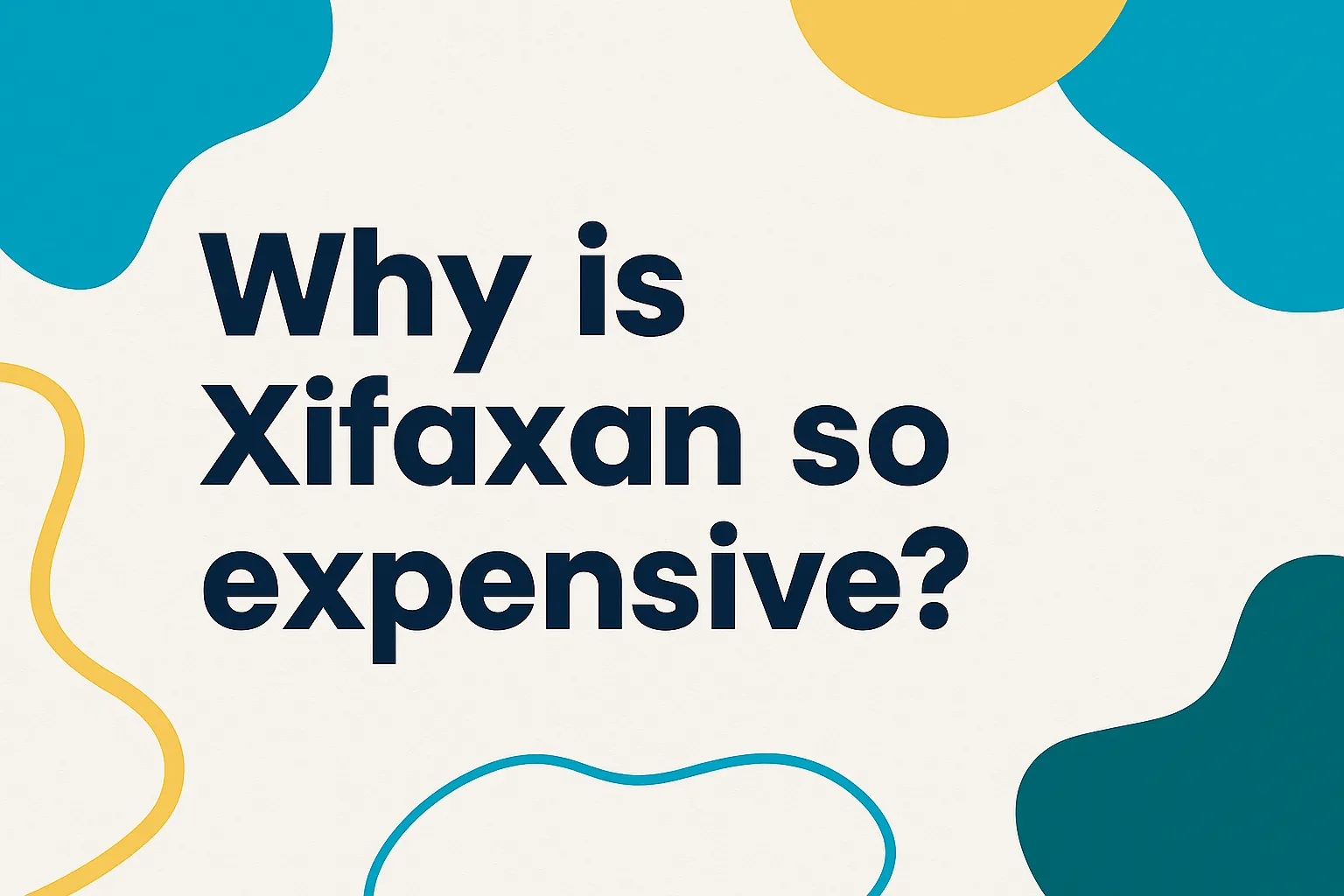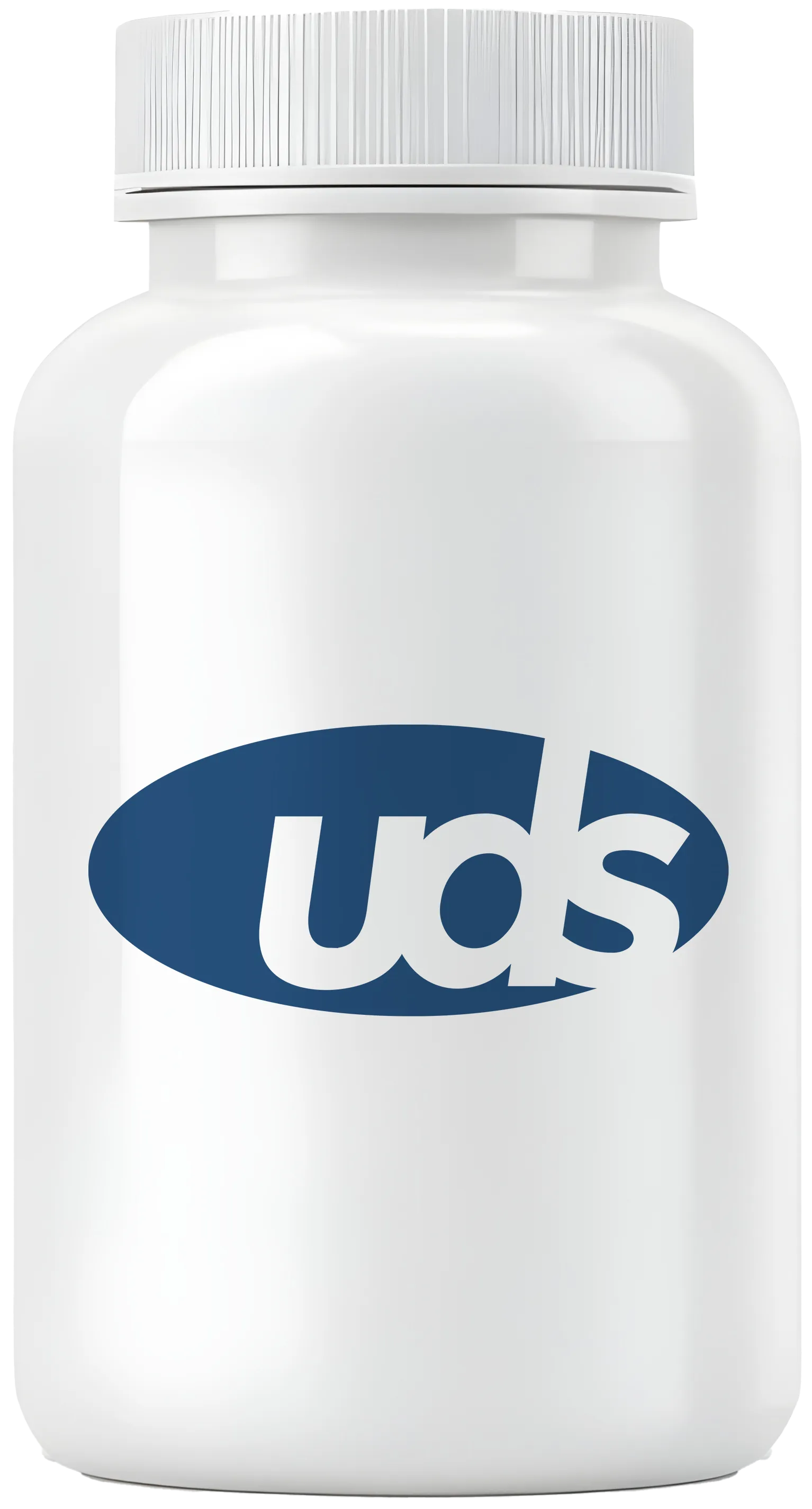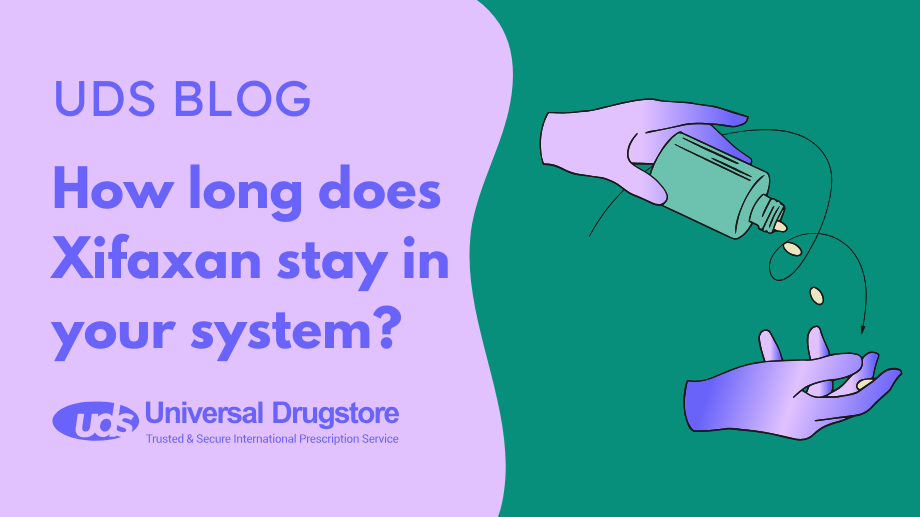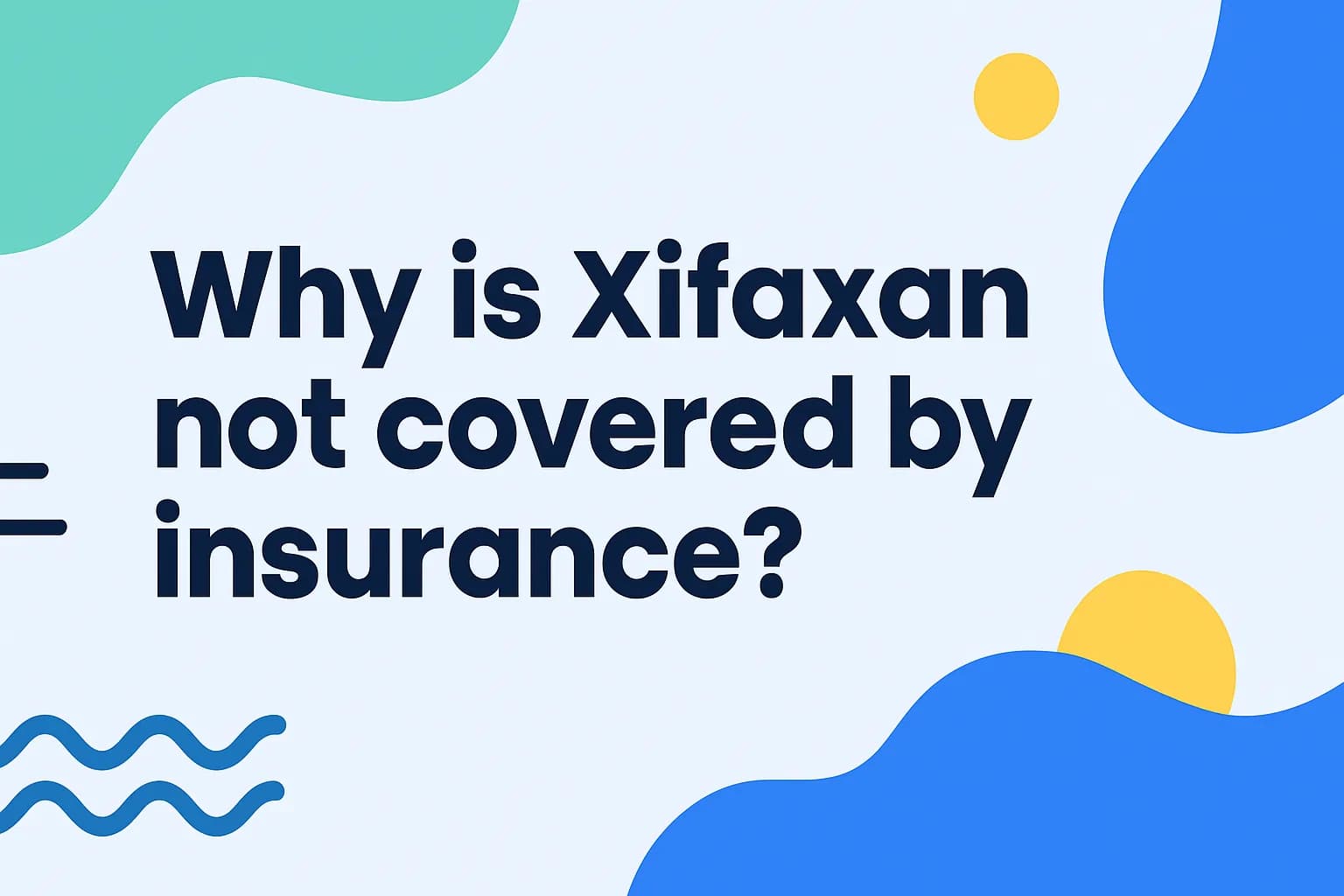Why is Xifaxan so expensive?

Xifaxan (rifaximin) is a brand-name drug manufactured by Salix Pharmaceuticals. It is an effective treatment option for irritable bowel syndrome with diarrhea (IBS-D), traveler’s diarrhea, and hepatic encephalopathy.
With no generic version available in the US, Xifaxan can be very expensive. Typically, generic drugs cost less than brand-name drugs as multiple pharmaceutical manufacturers sell the medication at competitive prices. With no competition, the drug manufacturer can try to recoup their research and development costs by charging higher prices for their brand-name drugs. On average, U.S. prescription drug prices are almost 3 times higher than other countries.
If you do not have insurance coverage or your insurance does not cover Xifaxan, you may not be able to afford it. You can expect to pay over $2500 for a course of treatment for IBS-D (#42 Xifaxan 550 mg tablets) if you are paying the full retail price.
At Universal Drug Store (UDS), you can get #60 brand-name Xifaxan 550 mg tablets for less than $750. Because we have suppliers outside of the US, Universal Drug Store (UDS) also has access to a generic version of Xifaxan. Using our network of international pharmacies in the UK, Canada, and other countries, you can get #100 tablets of generic Xifaxan 550 mg for around $200 through UDS. This equals over 90% off the retail price. You can also save money on thousands of other meds by ordering from UDS.
Keep reading as we discuss how Xifaxan works, other ways you can save money on this medication, and other frequently asked questions.
Xifaxan FAQs
What does Xifaxan treat?
Xifaxan is FDA-approved to treat:
- Travelers’ diarrhea caused by a type of bacteria called Escherichia coli (E. coli) in adults and children 12 years of age and older.
- Overt hepatic encephalopathy (HE). It stops the growth of bacteria that produce toxins and that may worsen liver disease. Xifaxan is generally used in combination with Enulose (lactulose) to treat this condition.
- Irritable bowel syndrome with diarrhea (IBS-D). Xifaxan has been found effective for treating IBS-D and relieving symptoms such as abdominal pain and diarrhea. Guidelines from the American College of Gastroenterology recommend Xifaxan for the relief of IBS-D symptoms.
While not approved, Xifaxan is sometimes used off-label to treat symptoms of a GI condition called small intestinal bacterial overgrowth (SIBO) such as stomach pain and diarrhea.
What are the common side effects of Xifaxan?
The most common side effects of Xifaxan seen in clinical trials when compared to placebo include:
- Headache
- Nausea
- Swelling in your hands and feet
- Dizziness
- Tiredness
- Bloating and gas
- Increase in your liver enzymes
Other possible Xifaxan side effects include:
- Constipation
- Fever
- Muscle spasms
- Itching
- Stomach pain
- Depression
- Sore throat and runny nose
- Joint pain
- Fever
- Rash
What are the serious side effects of Xifaxan?
- Serious, life-threatening allergic reactions, including anaphylaxis.
Symptoms of anaphylaxis may include hives, skin rash, swelling of your face, lips, tongue, or throat, and shortness of breath. Seek immediate medical attention if you experience any symptoms of a serious allergic reaction.
Worsening traveler’s diarrhea
Xifaxan only works to treat travelers’ diarrhea caused by a bacteria called Escherichia coli (E. coli). Other bacterial infections can cause travelers’ diarrhea and Xifaxan will not be effective against those.
If your diarrhea symptoms get worse or persist for more than 24 to 48 hours, discontinue Xifaxan and consider alternative antibiotics.
C. difficile diarrhea
All antibiotics, including Xifaxan, can cause a severe intestinal condition from a bacteria called Clostridium difficile (C. diff). Diarrhea from C. diff is a serious infection that can lead to life-threatening colitis and it requires immediate medical attention. This condition can occur during treatment or weeks to months after treatment has stopped.
Shop Medications
Get medical help right away if you have symptoms such as increased heart rate, foul-smelling diarrhea, nausea, fever, and frequent bowel movements (even up to 15 times per day).
These are not all of the possible adverse events of Xifaxan. You should always seek medical advice from a healthcare professional for any questions or concerns about your medical condition or treatment. You should also read all the patient information, including your Medication Guide that comes with Xifaxan. You can report side effects to the FDA at 1-800-FDA-1088 or www.fda.gov/medwatch.
How does Xifaxan work?
The active ingredient in Xifaxan is rifaximin, which is a rifamycin antibiotic. It kills bacteria by stopping them from making certain proteins they need to survive.
What should you tell your healthcare provider before taking Xifaxan?
You should not take this medication if you have an allergy to rifaximin or any of the inactive ingredients in this product. You should also avoid Xifaxan if you are allergic to any other rifamycin antibiotics such as Mycobutin (rifabutin), Rifadin (rifampin), or Priftin (rifapentine).
Inform your healthcare provider about all your medical conditions including:
- Liver disease
- If you are pregnant or plan to become pregnant
- If you are breastfeeding or plan to breastfeed
What drugs interact with Xifaxan?
Tell your healthcare provider about all your current medications to check for any drug interactions, including:
- P-glycoprotein and/or OATP inhibitors such as cyclosporine
- Warfarin
This list is not complete and many other drugs may interact with Xifaxan.
Is there a generic version of Xifaxan?
Currently, there is no generic available for Xifaxan in the United States. However, through UDS, you can get a generic version of Xifaxan from one of our licensed pharmacy partners in India for over 90% off the retail price.
When will Xifaxan go generic?
In November 2023, pharmaceutical company Salix won a lawsuit to stop Norwich Pharmaceuticals’ bid to force the FDA to approve its proposed generic version of Xifaxan. The FDA tentatively approved the generic but passed on granting a final approval until 2029, meaning the generic drug cannot launch before then.
Is Xifaxan covered by insurance?
Every insurance plan has a different formulary of medications they cover. You will have to contact your individual plan to see if Xifaxan is covered and what your out-of-pocket cost would be. It is estimated by Salix Pharmaceuticals that 97% of commercially insured patients have coverage for Xifaxan. Depending on your plan, it may require prior authorization before it is covered.
What is the cost of Xifaxan without insurance?
The cost of Xifaxan will vary depending on your insurance plan as well as which pharmacy you use. If you do not have health insurance or if your plan doesn’t cover it, Xifaxan can be extremely expensive. The average cost is over $2500 for a 14-day course treatment (#42 tablets) of Xifaxan 550 mg. If your insurance company does not pay for Xifaxan, talk with your healthcare provider to see if there is an alternative drug that is covered that might be right for you.
How can you save money on Xifaxan?
- Order from Universal Drugstore (UDS)
You do not need a Xifaxan coupon or discount card to save over 90% on this medication if you purchase it from UDS. We are a Canadian company that is one of the global leaders in online prescription drug savings with over 20 years of experience supplying prescription and over-the-counter (OTC) medications to our customers. Check out our online pharmacy to find out how much you can save on your Xifaxan prescription. - Copay, patient assistance program, or savings card
For certain patients on Xifaxan, there is an instant savings card offered by Salix Pharmaceuticals that will help pay for your prescription. The Xifaxan Instant Savings Card provides most eligible, commercially insured patients help with their Xifaxan copays. If you are eligible, you can pay as little as $0 per month for your prescription. For more information call 1-866-XIFAXAN (1-866-943-2926) and select option 1, or click here. - Medicaid
You may be eligible for Medicaid, depending on your yearly household income. Medicaid is used to help low-income individuals and families and may cover some of the cost of Xifaxan. Check with your local Medicaid office or website to see if you qualify. - Discount cards
You may be able to save money by using a prescription discount card. These cards can be used at your local pharmacy, even if you have insurance. - Compare prices
Check the price of Xifaxan at several pharmacies to find the best price. This should include online and mail-order pharmacies. Xifaxan prices will vary depending on where you buy it, the number of tablets per pack, and the strength of the tablets. The retail prices for the same prescription medicine can vary by hundreds of dollars at different pharmacies, even in the same city. - Find an alternative medication
Ask your healthcare provider about a lower-cost alternative to Xifaxan. Depending on the condition being treated, other medications may be effective and affordable. Try contacting your insurance company to see if they cover any of these other medications, and then ask your healthcare provider which one might be right for you.





